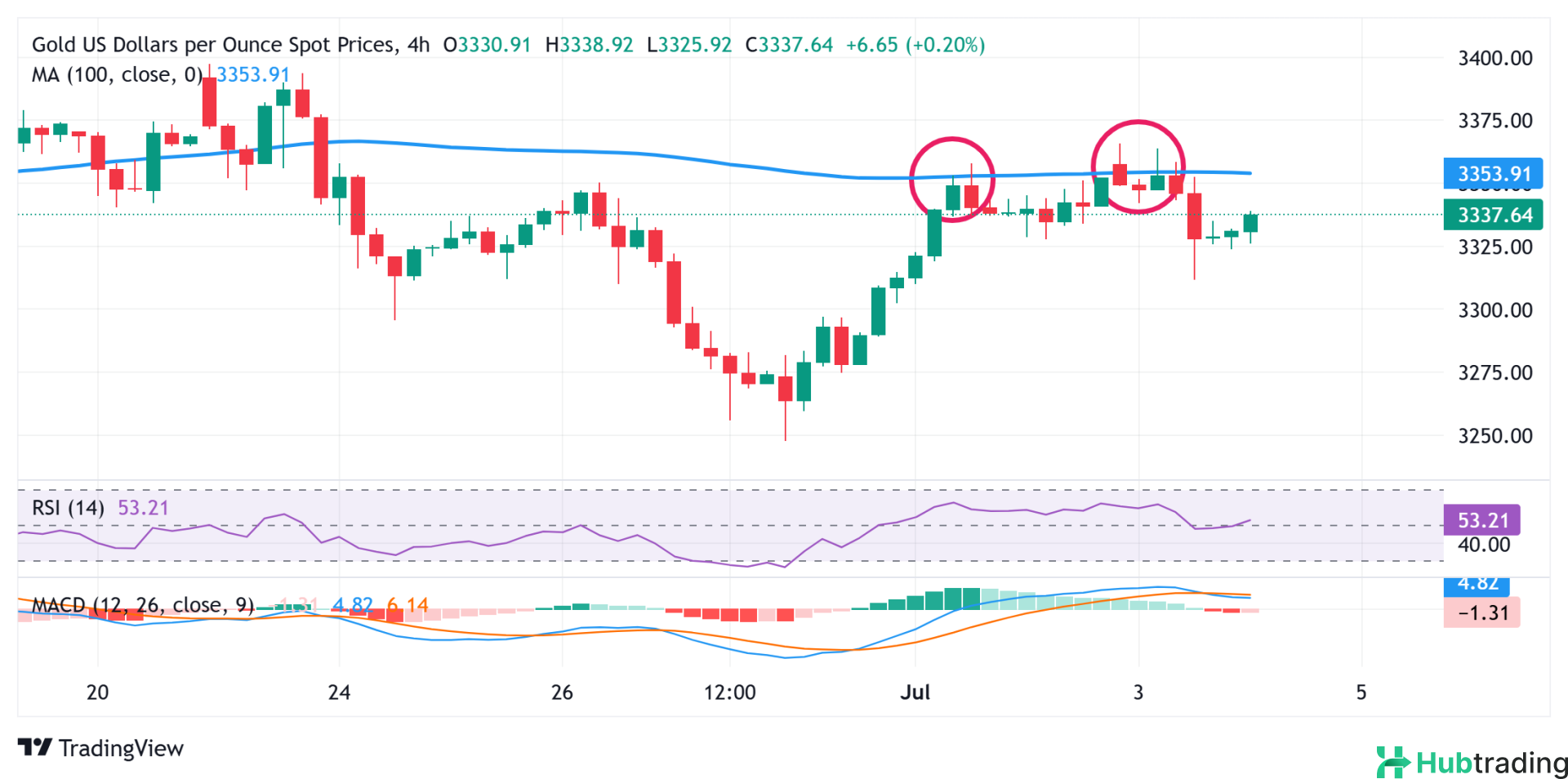-
Gold price rebounds, recovering part of Thursday’s losses driven by stronger-than-expected NFP data.
-
Ongoing U.S. fiscal concerns and global trade uncertainties pressure the Dollar, supporting XAU/USD.
-
Thin holiday trading conditions may limit fresh directional moves in the gold market.
Gold (XAU/USD) maintains a steady bid tone in early European trading on Friday, holding its ground after partially recovering Thursday’s losses that followed an upbeat U.S. Nonfarm Payrolls (NFP) report. Although the precious metal remains below the one-week high touched earlier, a weaker U.S. Dollar (USD), pressured by mounting fiscal concerns and trade-related uncertainties, continues to support gold’s safe-haven appeal.
The Dollar’s inability to extend Thursday’s gains—despite a stronger-than-expected NFP print—stems from investor worries over U.S. President Donald Trump's recently approved “One Big Beautiful Bill,” which is expected to significantly worsen the country’s fiscal outlook. This sentiment, combined with looming tariff-related tensions, has strengthened gold’s position, even as optimism in broader markets limits more aggressive buying.
Markets have now scaled back expectations of a Federal Reserve rate cut in July after the labor market showed resilience. Still, cooling wage growth has helped ease inflation fears, keeping the door open for rate cuts later this year. Despite the mixed signals, gold remains on course for its first weekly gain in three weeks, with fundamentals continuing to favor an upside bias.
Daily Market Movers: Gold Supported by Fiscal Concerns, Weakening USD
- On Thursday, the U.S. Dollar reached a one-week high after the Bureau of Labor Statistics reported that Nonfarm Payrolls increased by 147,000 in June—beating expectations of 111,000.
- The unemployment rate dropped to 4.1% from 4.2%, which tempered immediate expectations of Fed rate cuts. However, wage growth slowed to 0.2% month-over-month (down from 0.4%) and eased year-over-year to 3.7%, signaling diminishing inflation pressures and leaving room for potential rate cuts by year-end.
- Meanwhile, the U.S. Congress approved Trump’s tax-and-spending legislation, which the Congressional Budget Office estimates will add $3.4 trillion to national debt. This exacerbates concerns over U.S. fiscal stability and has weighed on the USD, supporting gold prices.
- Adding to market jitters, Trump announced plans to notify trade partners of upcoming tariff adjustments starting Friday, ahead of the July 9 deadline for higher reciprocal tariffs. These developments have reinforced gold’s safe-haven status, especially in an environment of geopolitical and economic uncertainty.
- With U.S. markets closed on Friday for Independence Day, thin holiday liquidity may limit fresh moves in XAU/USD. Still, the metal looks set to break its two-week losing streak, backed by a supportive macro backdrop.
Technical Analysis: Gold Eyes Breakout Above Key Moving Average

From a technical standpoint, gold is struggling to build momentum beyond the 100-period Simple Moving Average (SMA) on the 4-hour chart, which currently lies near the $3,352–$3,355 zone. This area remains a critical resistance level. A clear break above this barrier, followed by a move beyond the recent swing high near $3,365–$3,366, could pave the way toward the $3,400 psychological level.
On the downside, initial support is seen around the $3,326–$3,325 region, with further floors at $3,311–$3,310 and the $3,300 round figure. A decisive drop below $3,300 could shift the near-term bias bearish, exposing gold to deeper losses toward the $3,270 support zone. Extended selling pressure might even push prices back toward the monthly swing low near $3,248.
Overall, while short-term volatility may be limited by the holiday, the broader setup still favors bullish traders, particularly if gold can break through key resistance levels in the sessions ahead.





